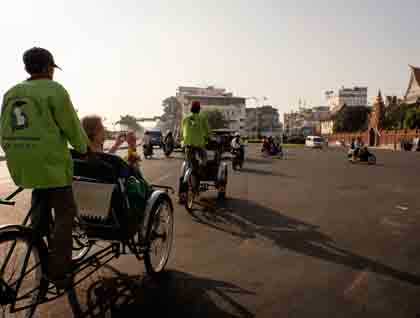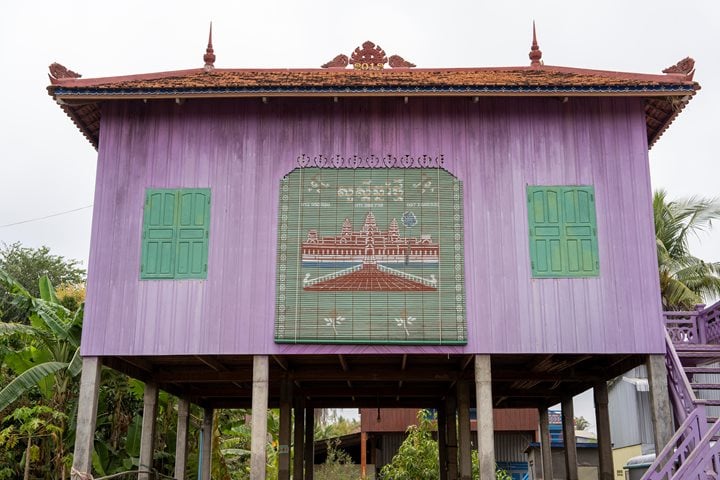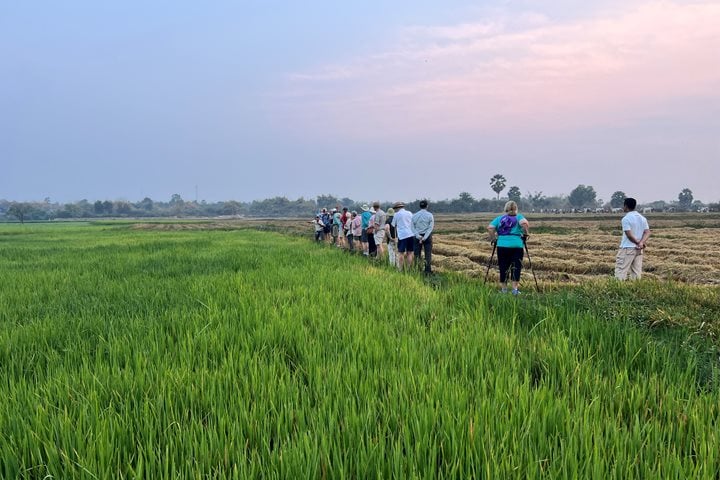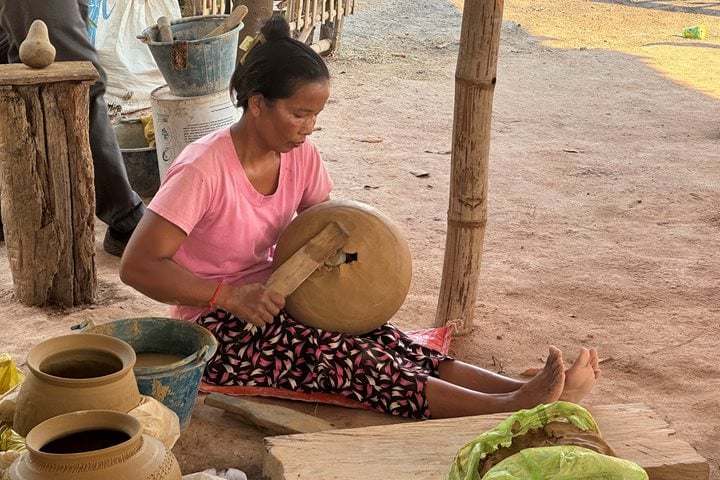Early morning on the Tonle Sap River is a busy place. As the sun rises above the horizon, fishermen are already employing various methods of catching fish while people from the villages dot the riverbank, tending to early morning tasks. Meanwhile on the Jahan, some of us were enjoying a morning Tai Chi class, while others were sipping coffee, photographing, or simply taking in the views that we passed by on our way to Phnom Penh.
The capital city of Cambodia, Phnom Penh, is a bustling city and is very different from the quiet rural villages we have visited upstream. Our visit began with a ride through town on one of the local modes of transportation, the cyclo. These are single-seated carts mounted on the front of a bicycle, and they are a wonderful way to see the city streets. We each entered the flow of traffic with a front row seat as we passed pagodas, temples, and markets, while motorbikes, tuk-tuk’s and vehicles weaved in and out around us, as we made our way to the Royal Palace.
The afternoon was spent focusing on the darker side of Cambodia’s history, the Khmer Rouge invasion of 1975, and its lasting impact. We began at the Tuol-Slen Prison and Genocide Museum, known by the Khmer Rouge as S21. This was a school that was converted to a prison where many Cambodians were interrogated, tortured, and killed. From there we visited one of the 343 killing fields in Cambodia, where many were killed and placed in mass graves. One of our guides, Khim Rithy, is a survivor of the invasion and shared his story with us, giving us a personal perspective on the horrific years that this country faced. It was a difficult and sobering afternoon, but an important one for many of us as we seek to understand the country and people that we are visiting.
Once back onboard the Jahan, we were treated with an outdoor barbecue and dance performance from a local dance troupe. The dances included the formal apsara style dances as well as some livelier folkloric dances. We’ve seen the currents that run deeply through the culture of Cambodia…the richness of its archaeological and religious heritage, the subtlety of its natural beauty, the gruesomeness of its dark recent history, and the festiveness of its music and dance, all of which make this place what it is today.







